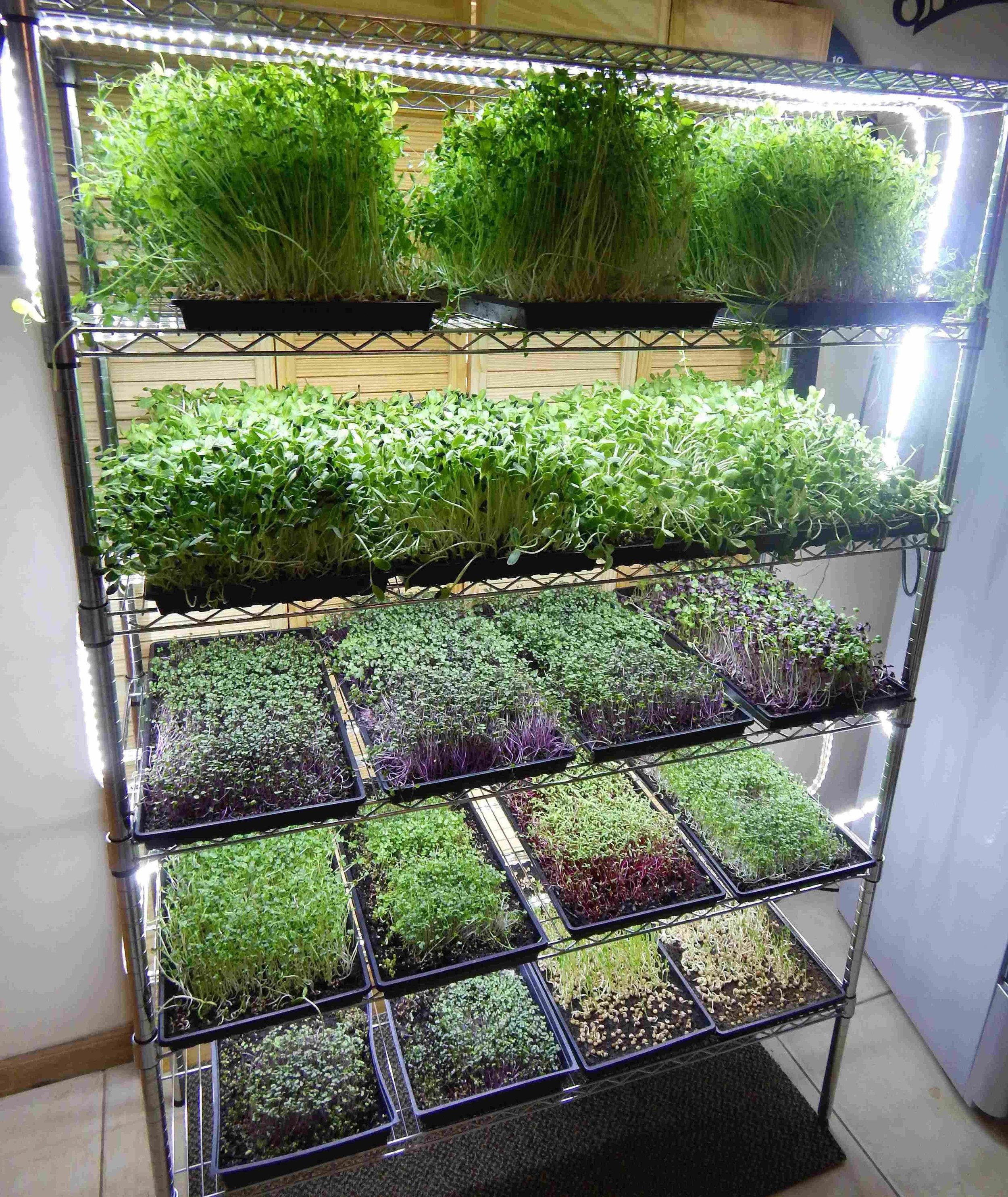What are Broccoli Microgreens?
What are microgreens?
Microgreens are vegetable greens that are harvested only days after developing their first cotyledon leaves with only one set of true leaves. They are popularly used, or maybe misused, as a visual garnish for restaurant dishes and usually end up getting wasted. They may look pretty but don’t be mistaken, when used as an ingredient, they can add more complex flavors of sweetness or spiciness to foods or used to add enhanced textures. They have gained popularity in recent years due to their conveniently fast production time and their many known health benefits. Microgreens are known to be up to 40 times more nutrient dense than their mature plant counterparts.
What are the benefits of broccoli microgreens?
High Nutrition
Broccoli microgreens, being in the cruciferous family which include broccoli, kale, and brussels sprouts, specifically contain a high level of glucosinolates. Glucosinolates are sulfur-containing compounds that get broken down into metabolites in your body. These metabolites help protect your cells from free radical damage. They can also act like an antibiotic and help ward off bacterial, viral, and fungal infections in the intestines. Recent studies have suggested that diet rich in cruciferous vegetables may lower your risk of developing certain cancers.
Broccoli and other cruciferous vegetables also contain another bioactive constituent called phenolic compounds. These are secondary metabolites which get categorized into various subgroups such as, phenolic acids, flavonoids, tannins, coumarins, lignans, quinones, stilbenes, and curcuminoids. These compounds are mainly reported as causing antioxidant activity, but are also associated with other health-promoting effects such as anticarcinogenic, antimicrobial, anti-inflammatory, and anti-aging properties.
Broccoli microgreens are known for their high concentration of essential nutrient composition. These essential nutrients are compounds that are required for normal body functions including, DNA synthesis, energy production, and biosynthetic pathways. These compounds must be supplied from our diet and include, vitamins, minerals, fatty acids, and amino acids. Recent studies have indicated that broccoli sprouts are expressly rich in vitamins (A, C, K, and folic acid), minerals (potassium, calcium, magnesium, and selenium), pigments (carotenoids and chlorophylls) and some other important nutrients (amino acids, fatty acids, and dietary fiber). Generally, the nutrient content depends mostly on germination time, and 8-day-old sprouts displayed the highest nutrient concentration.
The dietary intake of phenolic compounds has been associated with health-promoting effects, such as antioxidant, anti-aging, antiproliferative, and anti-inflammatory activity.
The dietary intake of carotenoids, specifically vitamin A, has been linked to the protection of DNA molecules, proteins, and lipids from oxidative damage. Dietary chlorophylls from fresh vegetables showed potential for wound healing, the control of calcium oxalate crystals, the modulation of xenobiotic metabolism, and the induction of apoptosis.
How can I grow my own broccoli microgreens at home?
All it takes is 15 minutes of your day and a small space on a shelf or table to get started growing your own microgreens for your family.
The supplies you will need are:
Seeds
I always try to get a good quality, organic, non-GMO seed. My preferred seed vendor is True Leaf Market. Although we’re discussing broccoli microgreens here, be sure to check out other vegetable’s microgreens to find out which is your favorite. Here’s a link to their online store: https://www.trueleafmarket.com/
Growing Medium
I prefer a 50/50 mix of coco coir and good quality organic potting soil. The coco coir allows you to stack your trays without overly compacting your soil, which would result in slower root development. If you choose to only use coco coir, be aware that coco coir doesn’t contain many nutrients for the seedlings to consume. Adding liquid fertilizers and organic soil amendments can help increase production time, protect against pathogens, and add more nutrients to your final crop.
Buy organic coco coir here.
Trays
I like to use a heavy duty, deep tray for microgreens. The depth helps keep soil from escaping and the extra strength will allow you to use these trays indefinitely, possibly a lifetime. I use a tray with holes on the bottom for the soil and microgreens with another tray without holes that goes under the first tray. This way you can water the microgreens from the bottom instead of spraying from the top, which could lead to excess moisture which might lead to pathogen growth.
Purchase the best heavy duty trays on the market here.
Light
I believe that real sunlight is the best source of light for your microgreens and is the natural choice for your seeds but natural light isn’t always consistent and outdoor temps can fluctuate tremendously depending on where you live. Unless you have a climate controlled greenhouse I would suggest using indoor grow lights instead. Grow lights provide consistent exposure that can be easily controlled using a outlet timer.
I recommend T5 Full Spectrum grow lights for microgreens and use a timer set to switch off every 12 hours.
Purchase my go to lights by clicking here and get yourself a reliable and affordable outlet timer here.
Spray bottles/water hose with sprayer
Filtered water is always preferred but tap water won’t kill your microgreens. Some tap water is known to contain chlorines, pesticides, heavy metals, and other contaminates. If you have a sink nearby you can use an attachment to connect a garden hose with a sprayer to the faucet for a convenient source of water. A simple food-safe spray bottle will also work.
Considerations
There are important conditions and requirements that you should consider if you want to grow microgreens on a regular basis.
These variables are seeds, light, growing medium, pathogen treatment, harvesting, and post-harvesting.



